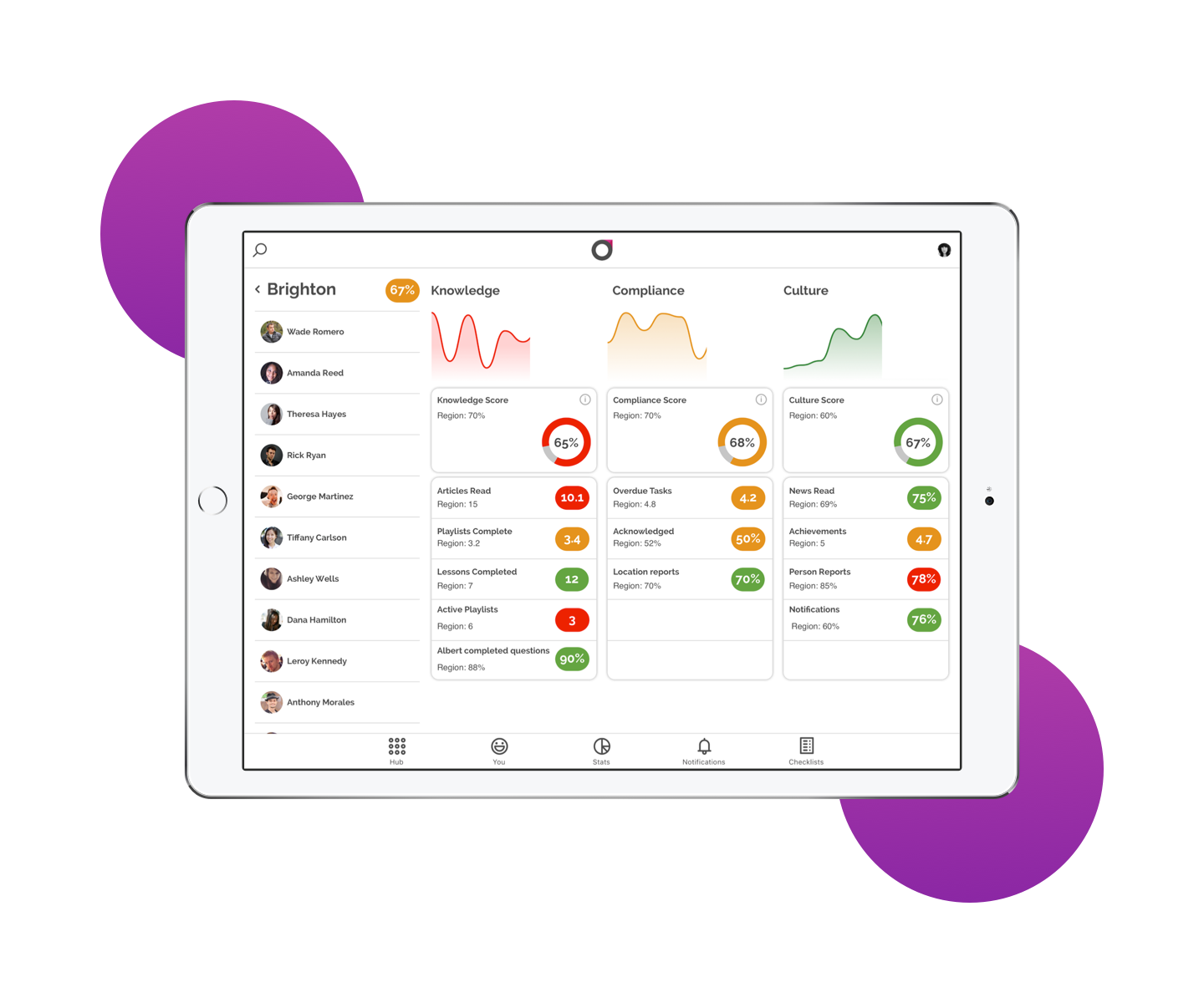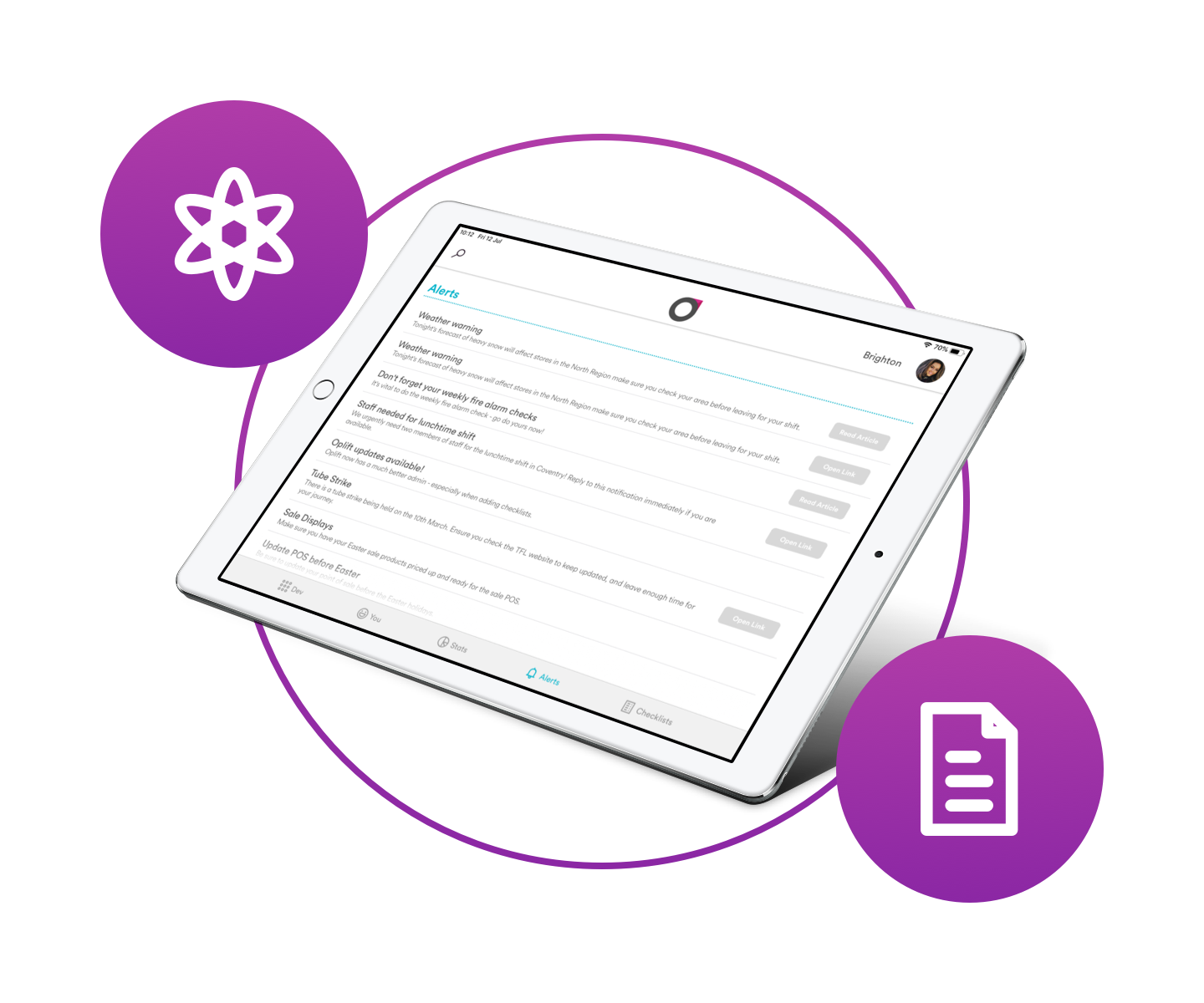What makes an incredible internal comms strategy?
The benefits of a good internal comms strategy are endless. You have more engaged and informed employees, everyone is more productive and workplace satisfaction goes up. Why is this? Because when employees feel like they are kept in the know, it makes them feel like they are a valued partner in the business. When they feel more respected and valued it makes them want to engage more because they now have a purpose. They don’t just feel like a cog in a machine anymore. They know why they are doing what they are doing and how it is impacting the overall business. Of course, this only happens if you have a great internal comms strategy.
But it is very hard to get it right. In fact, according to IBM and Globoforce (2017) a huge 44% of employees do not feel senior leaders are providing clear direction about where their organisation is heading. And just 13% of employees strongly agree that their leaders are effectively communicating with their organisation (Gallup 2017).
So before we get started it’s important to find out:
What makes a bad internal comms strategy?
#1 You are inconsistent – You send out news when you feel like it. Employees don’t have a regular stream of information which makes it hard for them to keep up with what you’re saying. Perhaps one week you send out five articles and then the next two weeks, your employees hear nothing from you.
#2 You lose sight of who you are talking to – You become out of touch with your audience and start creating content which doesn’t resonate with them. This makes it hard for them to engage.
#3 You don’t measure anything – You just send articles out and hope for the best. You have no idea what is and isn’t working and what you can do to improve.
#4 You have no way of listening to your employees – You send out internal comms but you have no way of getting any feedback from your employees.
#5 You have no company vision or mission – By having no vision or mission it means that your comms don’t reinforce this. It means your comms are random and don’t work to any overarching goal.
#6 You focus only on email – Internal comms should be intertwined into everything, you shouldn’t just rely on email to get your messages across. You should be using training, digital tools, and ambassadors to get your messages out.
So now we have given you an idea of what makes a bad strategy lets start looking at what makes a good internal comms strategy.
Our key steps to creating an effective internal comms strategy
1. Assess what you are doing at the moment
You can’t change your plan if you don’t look at what you’re doing at the moment. Below are a few questions which we suggest you ask yourself:
What tools are we using now for our internal comms?
Which tools are working and which tools are not?
What processes, in general, seem to be effective and which are not?
How often are we sending out comms?
What feedback are we getting from employees (if any)?
Do employees know what their purpose is, where they are heading and what the mission of your company is?
What challenges are we facing at the moment?
You have to be brutally honest about these questions in order to get the best results. This will allow you to keep what is working at the moment and get rid of any processes which are wasting time and resources.
A good way to measure an employee’s understanding is to send out a questionnaire or a quiz. Include questions such as;
Can you tell me what the company mission is?
Can you tell me about our company values?
Do you feel like you are communicated with enough?
Where do you think we are heading as a company?
What do you think that our biggest challenges are as a company?
What do you think our biggest strengths are as a company?
2. Define your goals
The most important part of your strategy is defining why you are doing what you are doing? What are you hoping to achieve with your comms? What do you want to see change as a result of your improved strategy?
Once you have answered these questions it will be easier to identify how your strategy will support the overarching goals of your business. This is incredibly important because your comms should always be used to support your overall business goals, not just to keep employees in the know. They also help you communicate with senior leaders exactly how your comms strategy will help them and what they are trying to achieve.
An example of a communication goal could be – We want to improve employee awareness of our products and services in order to increase sales by 30% in 10 months.
3. Define a timeline of when you want to hit your goals and objectives
You need to know when you want to hit your goals and what success will look like when you reach it. For example, in the first two months, you want all employees to achieve 80% or above on the supportive training material which you are sending out. In the third month, you want to see a 20% shift in the number of positive customer reviews etc. Break your big objective down into smaller goals and objectives to measure your success.
4. Do some additional research on your audience (your employees)
Just the same as a marketer would do. You need to be finding out as much about your audience as humanly possible. Only then, can you begin to create content which really engages with them? You can do this by sending out surveys, spending a few days working with your employees so you can listen to what their problems or challenges are.
Segmenting your audience is essential as every team is going to have different needs and concerns. Your team’s probably digest information differently as well. For example, your sales team would appreciate a face to face chat about your updates when they can, whereas your finance team would probably rather read an update.
Find out how they like to read updates – do they like them summarised, bullets, lists or videos. Find out what time of day they are most likely to read your updates and what kind of content they are most likely to avoid.
5. Think about what tools and tactics you are going to use to achieve your goals
As we mentioned earlier relying on just email isn’t going to get the results that you want. Think about what other methods you can use to reinforce your message. For example, are you going to have any ambassadors who are going to reinforce your message? For your messages to be taken seriously you need senior-level leaders who are going to back your messages and communicate them effectively to your staff. They need to show enthusiasm and positivity for the things you are trying to say.
Are you going to have any additional tools which will help you measure your success? For example, Engage’s internal comms tool allows you to see the reach and engagement levels of your posts. You can see what’s popular plus who has read what. For anyone who hasn’t read the articles, you can send alerts to remind them. These analytics will allow you to tailor your content accordingly to ensure it’s the most engaging that it can be.
Are you going to include training to support your internal comms plan? Our customers like to use gamification to back up their internal comms. When they write an article on our platform, they can then repurpose the information and use it for microlearning or gamification. This makes it easy to reinforce the message and ensure that employees fully understand what you are saying.
6. You should think about what kind of content you will share that is going to be most interesting and relevant to your audience
A bog-standard post about your company update is probably not going to engage many of your audience. You need to think about which angles you can approach the topic from to make it interesting to a certain segment. Think about stories that would appeal to certain groups e.g. an amazing customer review which an employee received would make a great post for your sales teams.
Think about how they are going to consume the information. For example, your delivery drivers would probably prefer a podcast format so they can listen to it whilst they are driving.
7. Send out your content regularly and have a plan in place for when employees miss your news
Work out when it is best to send out your comms and how regularly you are going to send them. For example, you will send out AT LEAST one internal comms post every Monday. If you have more news, increase it to two posts to be sent every Monday and Friday. Recaps and summaries to go over internal comms from the week before will be sent on the following Wednesday. These are great for employees who were away the previous week so they can easily catch up. Our platform has a feature that allows you to include all comms in a summary roundup, these can be sent daily, weekly or monthly.
8. Give employees a way to talk back to you
As mentioned previously, a good internal comms strategy factors in the need for employees to have a voice. Make sure that you have a way for your staff to let you know what they think. You can do this with digital internal comms apps such as Engage, which allow employees to like, dislike or comment on any post which you publish. If you don’t have an internal comms app you could have an online forum where employees can discuss your latest announcements. These should be closely monitored by an internal comms professional or an ambassador. They will also need to initiate the conversation to try and get people talking. Or you could even create a channel on your instant chat tool such as slack where employees can share their thoughts on your latest article.
Not everyone will want to share their opinions, but a few people might and it shows that you respect and value the thoughts of all employees, not just senior leaders. It is always good to let employees know when you have put their ideas into action.
9. Don’t go overboard on your internal comms
A perfect internal comms strategy understands that the message needs to get across, but it MUST NOT be pushy or aggressive. If it is, your comms will become annoying and your staff will go out of their way to avoid what you are saying. Choose your content wisely and really think about what’s worth posting and what doesn’t really need to be heard. Ask yourself if the content supports your overall objectives if it doesn’t then don’t send it out.
You also need to think about which comms are essential for which months because only then will you know when you have room to post more or less.
So the answer to what makes a good internal comms strategy is a whole lot of planning
Think of your internal comms as a marketing strategy. Plan, plan, plan and then begin. You can only expect to see shifts in behaviour when you have really thought about your tactics and timelines. Having a clear idea of what success looks like will help you determine what is working and what’s not. It will give you direction and allow you to continue developing and tweaking your plan to ensure it achieves the best results.
If you need help transforming your internal comms let us help you. See our internal comms solutions here. Or if you need consulting or a tailor-made solution for your business we can help with that too. Call us on 01273 778289, say hello at hi@ocasta.com or fill in our contact form and we’ll get back to you right away.




